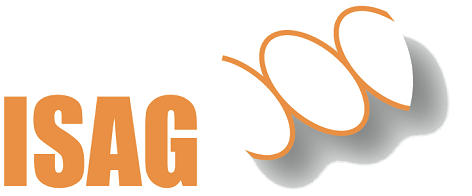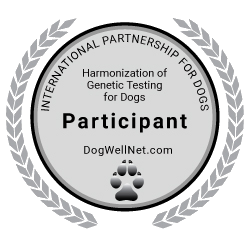Dilated cardiomyopathy (DCM)
Dilated cardiomyopathy (DCM) is a disease of the heart muscle in which blood cannot be pumped...lisää
Disease
Dilated cardiomyopathy is a disease of the heart muscle. Due to the disease, the left ventricle (the hearts main pumping chamber) is enlarged, dilated and weak, so that the heart is not able to pump the blood effectively.
In the breed Dobermann, dilated cardiomyopathy is a widespread inheritable disease.
Affected dogs suffer from congestive heart failure or sudden cardiac death. Ventricular tachyarrhythmia is a typical sign of DCM and can be diagnosed by an echocardiogram or electrocardiogram (ECG). So far, four genetic variants have been identified to be associated with dilated cardiomyopathy in the breed Dobermann.
There is a highly variable penetrance of DCM in this breed which means that genetically affected dogs could also show very mild or even no symptoms during their lifetime. Besides to the genetic status, nutrition, the level of exercise and other genes seem to have an impact on the individual risk of the dog. Therefore, the genetic test helps to identify the DCM associated variants but gives no prediction which genetically affected dogs will show clinically relevant symptoms.
In the American Dobermann population, especially the variants DCM1 and DCM2 seem to be relevant. DCM1 is located in the gene PDK4 and provides energy to the heart, while DCM2 is located in the gene titin (TTN) and functions in heart contraction. Dogs carrying the DCM1 variant (alone) heterozygous or homozygous, are 10 times more likely to develop the disease than dogs without the variant, while 37% of the dogs with this variant will develop the disease. Dogs carrying the DCM2 variant are 21 times more likely to develop the disease, while 50% of the dogs with this variant will develop the disease. Dogs carrying both variants have the highest risk to develop DCM (30 times) and 60% of the dogs with both variants show symptoms.
In the European Dobermann population, the risk markers DCM3 and DCM4 are particularly relevant and are associated with left ventricular systolic dysfunction and dilatation. DCM3 is inherited in a dominant manner: heterozygous carriers have a higher risk to develop DCM compared to animals not carrying the variant, while the risk of homozygously affected animals is higher compared to carriers. DCM4 is inherited recessively; animals homozygous for the DCM4 variant have a higher risk to develop DCM compared to free animals or heterozygous carriers. The DCM3 and DCM4 variants appear to have an additive effect, with a stronger effect of DCM4.
The risk of DCM can be estimated by the combination of genotypes as follows:
Risk < 50 %: N/N (DCM3) and N/N (DCM4), N/N (DCM3) and N/DCM4
Risk 50-75 %: N/DCM3 and N/N (DCM4), N/DCM3 and N/DCM4
Risk < 75 %: N/N (DCM3) and DCM4/DCM4, N/DCM3 and DCM4/DCM4, DCM3/DCM3 and N/N (DCM4), DCM3/DCM3 and N/DCM4, DCM3/DCM3 and DCM4/DCM4
Dogs at increased risk should be examined regularly for possible signs of the disease and treated with appropriate medication as soon as necessary to slow the progression of DCM as much as possible. With the help of genetic testing, the prevalence of known variants within the breed can be reduced without restricting the gene pool too much. When mating, care should be taken to avoid puppies with a high risk of DCM, thereby reducing the prevalence of risk variants in the breed.
In the breed Dobermann, dilated cardiomyopathy is a widespread inheritable disease.
Affected dogs suffer from congestive heart failure or sudden cardiac death. Ventricular tachyarrhythmia is a typical sign of DCM and can be diagnosed by an echocardiogram or electrocardiogram (ECG). So far, four genetic variants have been identified to be associated with dilated cardiomyopathy in the breed Dobermann.
There is a highly variable penetrance of DCM in this breed which means that genetically affected dogs could also show very mild or even no symptoms during their lifetime. Besides to the genetic status, nutrition, the level of exercise and other genes seem to have an impact on the individual risk of the dog. Therefore, the genetic test helps to identify the DCM associated variants but gives no prediction which genetically affected dogs will show clinically relevant symptoms.
In the American Dobermann population, especially the variants DCM1 and DCM2 seem to be relevant. DCM1 is located in the gene PDK4 and provides energy to the heart, while DCM2 is located in the gene titin (TTN) and functions in heart contraction. Dogs carrying the DCM1 variant (alone) heterozygous or homozygous, are 10 times more likely to develop the disease than dogs without the variant, while 37% of the dogs with this variant will develop the disease. Dogs carrying the DCM2 variant are 21 times more likely to develop the disease, while 50% of the dogs with this variant will develop the disease. Dogs carrying both variants have the highest risk to develop DCM (30 times) and 60% of the dogs with both variants show symptoms.
In the European Dobermann population, the risk markers DCM3 and DCM4 are particularly relevant and are associated with left ventricular systolic dysfunction and dilatation. DCM3 is inherited in a dominant manner: heterozygous carriers have a higher risk to develop DCM compared to animals not carrying the variant, while the risk of homozygously affected animals is higher compared to carriers. DCM4 is inherited recessively; animals homozygous for the DCM4 variant have a higher risk to develop DCM compared to free animals or heterozygous carriers. The DCM3 and DCM4 variants appear to have an additive effect, with a stronger effect of DCM4.
The risk of DCM can be estimated by the combination of genotypes as follows:
Risk < 50 %: N/N (DCM3) and N/N (DCM4), N/N (DCM3) and N/DCM4
Risk 50-75 %: N/DCM3 and N/N (DCM4), N/DCM3 and N/DCM4
Risk < 75 %: N/N (DCM3) and DCM4/DCM4, N/DCM3 and DCM4/DCM4, DCM3/DCM3 and N/N (DCM4), DCM3/DCM3 and N/DCM4, DCM3/DCM3 and DCM4/DCM4
Dogs at increased risk should be examined regularly for possible signs of the disease and treated with appropriate medication as soon as necessary to slow the progression of DCM as much as possible. With the help of genetic testing, the prevalence of known variants within the breed can be reduced without restricting the gene pool too much. When mating, care should be taken to avoid puppies with a high risk of DCM, thereby reducing the prevalence of risk variants in the breed.
Breed
Dobermann
Heredity
see info text
Test duration
1-2 weeks after arrival of the samples in the lab


